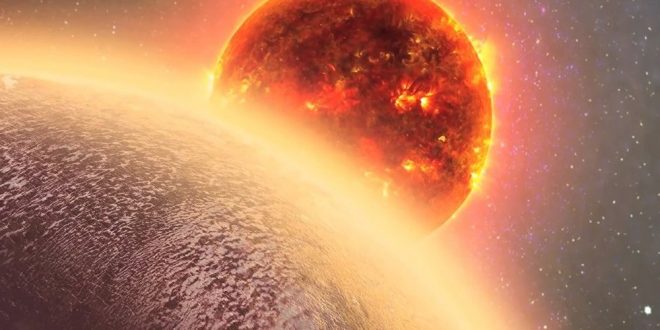Astronomers have found an Earth-like planet with an atmosphere for the first time.
The planet, GJ 1132b, is cloaked in a thick layer of gases composed of water, methane or a mixture of both, new research found. The exoplanet is 1.4-times the size of Earth and 39 light years away. Researchers observed how light from GJ 1132b’s host star interacted with the planet’s atmosphere as it passed by the sun.
“While this is not the detection of life on another planet,” lead author Dr. John Southworth, an astrophysicist from Keele University in the UK, said in a statement, “it’s an important step in the right direction: the detection of an atmosphere around the super-Earth GJ 1132b marks the first time that an atmosphere has been detected around an Earth-like planet other than Earth itself.”
Dr. Southworth and his colleagues observed the planet using the 2.2-meter ESO/MPG telescope in Chile, measuring its star system in seven different wavelengths and detecting slight decreases in brightness as the exoplanet’s atmosphere absorbed some of its star’s light while transiting.
According to New Scientist, the detection of the atmosphere around GJ 1132b marks the first time that an atmosphere has been detected around a planet less than twice the size of Earth. In most prior detections, atmospheres have been found around far larger, Jupiter-sized gas giants, although one super-Earth nearly eight times our planet’s mass was found to have one.
Dr. Southworth and his colleagues studied the exoplanet, which orbits a very low-mass star in the southern constellation Vela, using the GRONB imaging instrument on the Chilean telescope. Their observations revealed that GJ 1132b appeared to be larger in one of the seven wavelength bands used to monitor it, which indicates the likely presence of an atmosphere that is opaque to that specific wavelength but which appears to be transparent in all other forms of light.
While Venus’s atmosphere is primarily made of carbon dioxide, and Earth’s is mostly nitrogen, Space.com reported that the new study shows that GJ 1132b’s atmosphere appears to be made up mostly of either water vapor or methane and that the planet could even be a water world with an atmosphere comprised primarily of hot steam.
Since low-mass stars like GJ 1132 are among the most common in the galaxy and are known to host groups of small planets, the researchers said that they are encouraged by their discovery and the possibility that such worlds could maintain atmospheres despite the high levels of activity in and around such stars. If planets like of GJ 1132b can maintain an atmosphere for several billion years, they said, it indicates that such worlds could potentially be habitable.
Agencies/Canadajournal
 Canada Journal – News of the World Articles and videos to bring you the biggest Canadian news stories from across the country every day
Canada Journal – News of the World Articles and videos to bring you the biggest Canadian news stories from across the country every day



